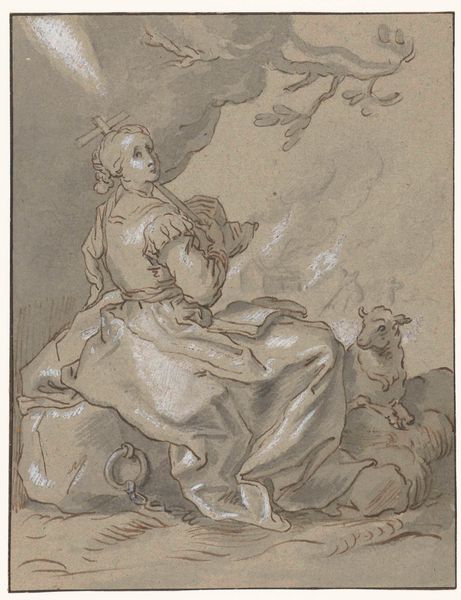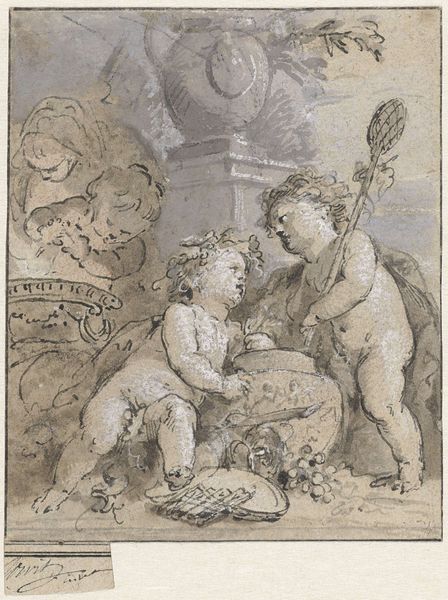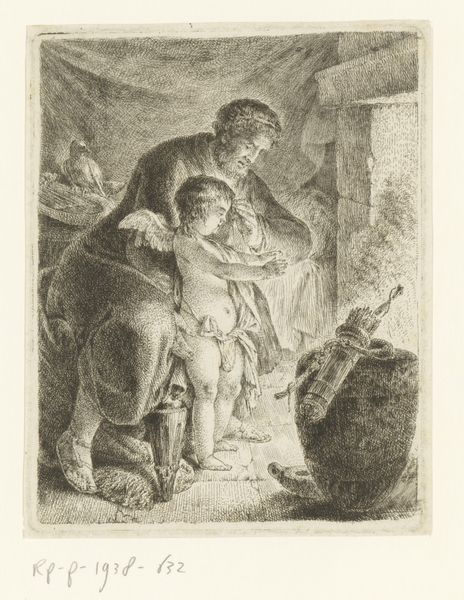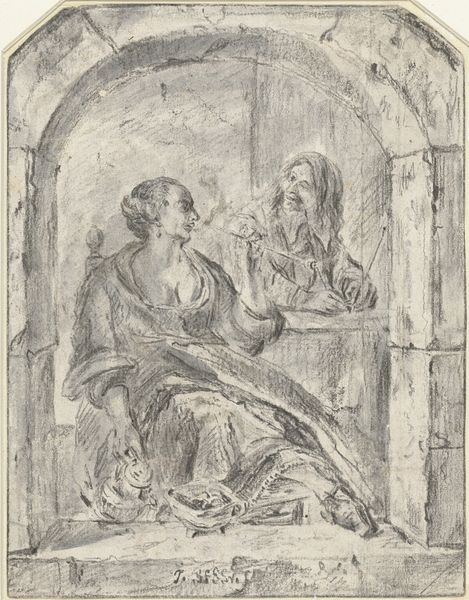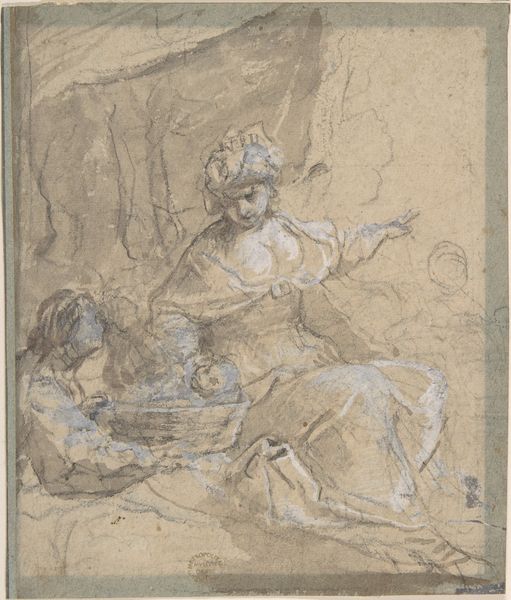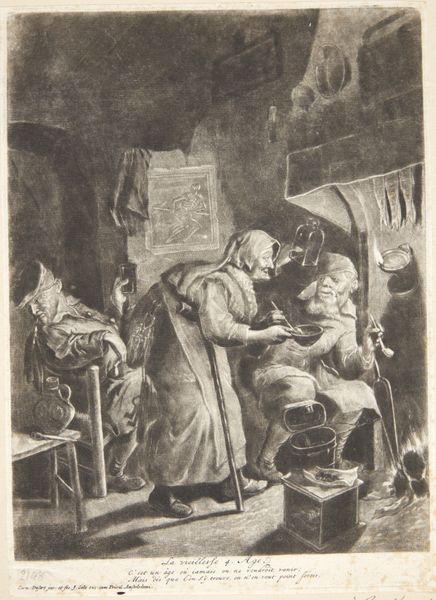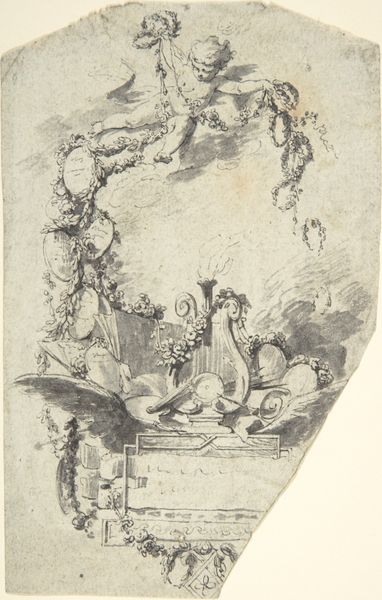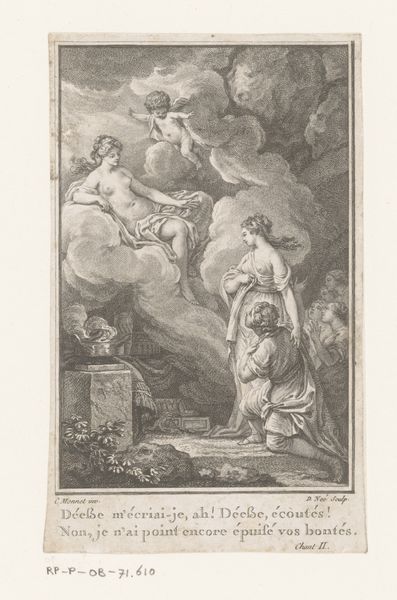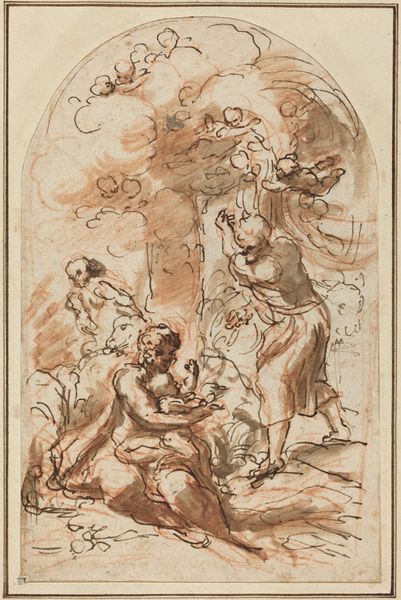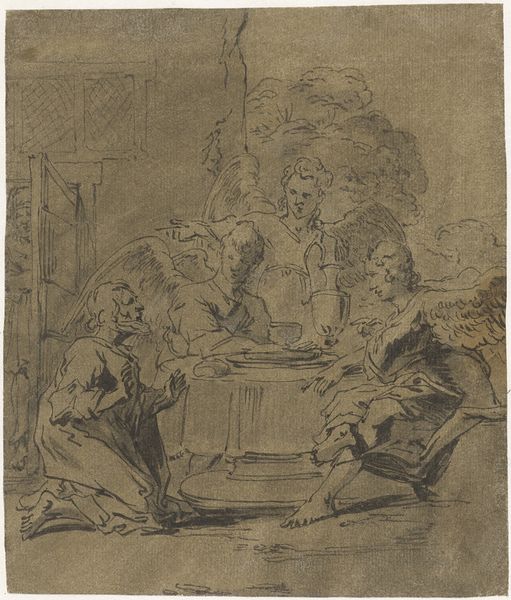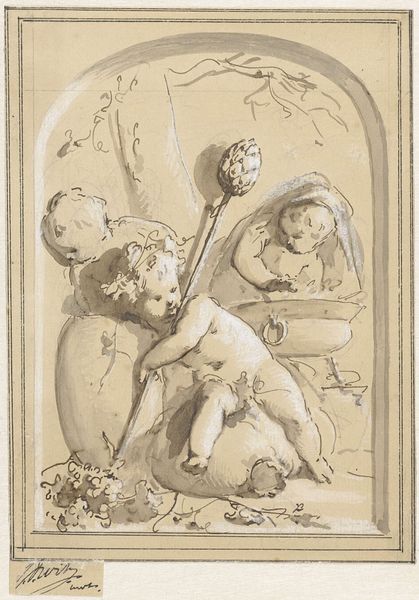
drawing, ink, charcoal
#
portrait
#
drawing
#
allegory
#
baroque
#
charcoal drawing
#
figuration
#
ink
#
charcoal
#
watercolor
Dimensions: height 177 mm, width 119 mm
Copyright: Rijks Museum: Open Domain
Jacob de Wit made this allegorical sketch with brush in grey and brown ink around the first half of the 18th century. De Wit’s work reflects a Dutch culture steeped in both religious symbolism and the rising fashion for classical themes in the arts. The putti, or cherubic figures, are not merely decorative; they represent innocence and divine love, popular motifs in religious art since the Renaissance. The altar suggests a space of worship or sacrifice, linking the earthly and the divine. Made in the Netherlands, this sketch emerged during the Dutch Golden Age, a period of economic prosperity. This prosperity allowed for a flourishing art market increasingly shaped by academies and connoisseurs. Understanding this sketch requires us to consider the religious, economic, and institutional contexts in which it was produced. By consulting period texts, we gain insight into the cultural values that shaped De Wit's artistic choices.
Comments
No comments
Be the first to comment and join the conversation on the ultimate creative platform.
